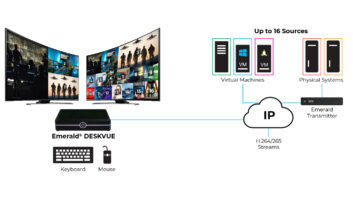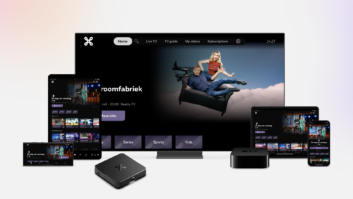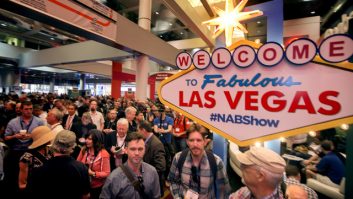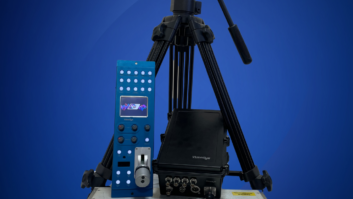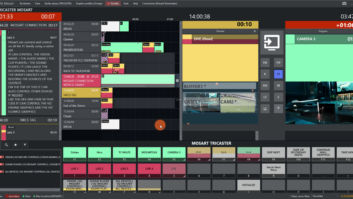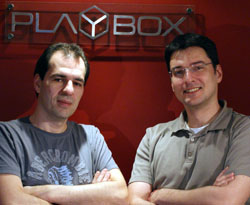
PlayBox Technology’s boxes are at the centre of file-based workflows. By Krasimir Dachev, CTO and Kamen Ferdinandov, chief software developer, PlayBox Technology
In 2000, the ‘channel-in-a-box’ moniker described a very different approach to the way television playout operated. Then VTRs replayed video, caption generators created on-screen text, graphics came from stills stores and cuts were made by the presentation mixer – all controlled by separate ‘computer automation’. These days, many thousands of channels, ranging from ‘start-up TV’ to multinationals, run on channel-in-a-box technology.
Today many manufacturers offer ‘boxes’ – but they vary widely in capabilities and performance. And although the ‘box’ solutions are generally low cost, some offer unique and powerful capabilities. In the last few years technologies have switched around and, with broadcasters now being disc- and file-based, the right ‘box’ can fit, or even be the making of, the modern playout workflow, whereas the bespoke separates are looking old hat.
Of course the ‘box’ is a PC and the rest is (just) software. But this is not just any PC as, for defined high performance, the PC too has to be defined for continuous video capability – including HD. The PC platform benefits directly from the advances of commodity computer technology with recent examples, Windows 7 and Core i7 CPUs, adding extra performance.
It’s not rocket science or expensive to build such a computer; but creating a series of versatile software modules, such as playout, graphics, automation and many more, that can run together and provide the reliability needed for on-air broadcast playout, is. However, the various manufacturers have different ideas, priorities, markets and aims, and so offer boxes and software to suit.
A different approach
A major point of divergence in box design occurs in the handling of file formats. Nearly all disc-based video products from many of the bigger companies have used their ‘pet’ favourite, possibly in-house, file format. The video I/O cards have to be able to translate between this and SDI.
This is the easiest way to build a ‘box’ but has limitations in that its store is not compatible with any other file format, so to use other file-based material, such as archives or the output of an NLE suite, often involves playout to baseband video and then re-coding and recording. This is slow, expensive and cannot reasonably be a part of a wider file-based system. The design is also dependent on the supply of specific I/O cards – often from other manufacturers who may want to update or delete the products. Both happen.
Eleven years ago, as a start-up company with no ‘pets’, PlayBox Technology took a different approach, to build a remultiplexing (Remux) engine. Executed 100% in software this enables any MPEG-1/2 encoded video file format (container) to be accepted directly, and then using it without having to transcode, and playing it out in the chosen replay video output.
So all existing MPEG-1/2 file-based material can be directly accessed by the box’s store. This has enabled PlayBox Technology’s boxes to be at the centre of file-based workflows; making otherwise fragmented file-based operation work smoothly.
The design involved a big development hit at the outset and took time to perfect but the long-term benefits have been substantial. Besides the potential for efficient workflows this approach also removes any close association with specific types of I/O cards as the requirements from them become quite basic. Even more – it allows direct stream output without need of re-compression. Also, should a new container format be met, handling can be available in a short time. It’s only software!
Crucial reliability
More recently there has been an explosion of new file types and compression codecs (MPEG-1, MPEG-2, H.264, M-JPEG, JPEG2000, etc), containers (AVI, MPG, MOV, MXF, GXF, etc.) video resolutions (SD, HD and others), frame rates (PAL – 25fps, NTSC- 29.97 fps, 30 fps, 24 fps, 50 fps, 59.94 and others), audio codecs (MPEG, AAC, uncompressed, etc) and different metadata.
To maintain flexibility PlayBox developed a new software engine, Mixer, to allow continuous realtime replay of any mix of totally different file formats. All formats are transcoded in realtime to a common preselected output format – usually that of the television channel.
This approach allows total independence of source files in terms of their properties (listed above) and the direct playback of virtually any file without need of preprocessing or conversion. Unsurprisingly Mixer has much higher system resource requirements than Muxer but these are amply provided by modern commodity PC technology.
Again this approach gives flexibility in its independence of both source formats (files, streams, even live sources) and output. Whenever a new source format or video output is available it is simply plugged in to the engine.
All this would be irrelevant without the reliability that is crucial to broadcasters – especially when playout is deployed in remote locations. First, reliability is built into the product and its software. For those seeking fail-safe measures such as dual redundant power supplies, 1+1 or 1+n redundant systems – which will require extra boxes, RAID storage protection, distant alarm monitoring, etc — these can add them according to clients’ requirements. Being an IT-based system, many of these features are available off the shelf but one, a bypass relay introduced in 2009, was the first hardware PlayBox had built.
Most broadcasters want complete playout systems that will operate with their existing or chosen other equipment. This can be supplied as a series of software modules designed to work together sharing one PC host, or working over several boxes, whichever fits the requirements. What is delivered is a system – several boxes – built for the customer’s needs. Major additions can include MAM, newsroom computer system or traffic management – all built to work together with the box.
PlayBox Technology has been developing its playout solutions for over 11 years over which time the acceptance of its channel-in-a-box design has risen sharply – especially through the last three years. The ‘box’ concept is now well understood by all sizes and types of broadcaster. Despite the in-a-box tag, most installations comprise a number of boxes to meet customer requirements. System design, integration and installation remain popular services. All this points to the maturity of the in-a-box concept which, with a proven track record, can fit well and enhance modern playout workflows.
